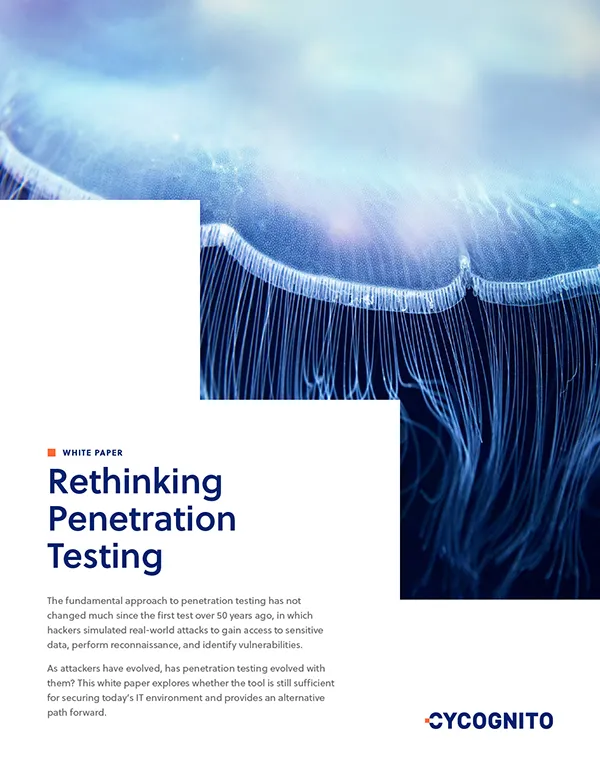



Penetration Testing as a Service (PTaaS) is a cybersecurity approach that blends automated tools with expert human analysis to provide continuous, on-demand vulnerability testing and remediation. Delivered via a cloud-based platform, PTaaS offers continuous security management beyond traditional point-in-time assessments, helping organizations identify and fix security gaps faster to strengthen their overall cyber resilience.
Key aspects of PTaaS include:
Benefits of PTaaS include:
Traditional penetration testing is structured around scheduled assessments performed at regular intervals or before major product releases. These conventional tests usually result in lengthy reports delivered after the engagement, with limited interaction or ongoing support. PTaaS modernizes delivery by using collaborative online portals, quicker result turnaround, and ongoing assessment capabilities. As threats evolve and development cycles accelerate, static testing leaves organizations vulnerable between tests.
PTaaS enables organizations to integrate assessments into their daily workflows, responding to vulnerabilities faster and often engaging testers on an as-needed or continuous basis. This flexibility translates to improved security responsiveness and helps organizations align with agile and DevSecOps development practices. PTaaS offers greater transparency, collaboration, and adaptability than older, static testing models.
PTaaS leverages both automated vulnerability discovery and skilled ethical hackers to provide thorough testing. While automation rapidly uncovers common vulnerabilities and reduces manual effort for repetitive tasks, human testers focus on complex attack paths and logic flaws that tools can miss. This strategy helps ensure critical exposures are not overlooked, and nuanced attacks specific to each organization’s context are identified.
Human-led assessments remain vital for identifying business logic errors, chaining simple flaws into major exploits, and simulating sophisticated attack tactics. PTaaS platforms coordinate this collaboration, with automation providing scale and speed, and human expertise ensuring depth and context. The hybrid model is essential to effective penetration testing, bridging the gap between efficiency and thoroughness.
Continuous penetration testing is a cornerstone of PTaaS, allowing for ongoing assessment rather than periodic checks. Integrating regular scans, vulnerability disclosure, and retesting into the software development lifecycle helps organizations catch new issues introduced during frequent code changes or infrastructure updates. This proactive strategy aligns security operations with the rapid pace of modern development environments.
By transitioning from annual or quarterly engagements to continuous evaluation, organizations reduce their window of exposure and can prioritize remediation of high-risk vulnerabilities in near real-time. PTaaS platforms facilitate this process by automating repeat assessments and providing continuous dashboards that track vulnerabilities, remediation status, and historical trends.
PTaaS solutions are generally delivered through cloud-hosted platforms that centralize management, reporting, and collaboration. This model simplifies scheduling tests, tracking progress, accessing results, and engaging with testers. Security and compliance teams benefit from unified dashboards showing vulnerability status and remediation metrics across their entire application or infrastructure estate.
Cloud-based PTaaS platforms improve accessibility, allowing distributed teams and stakeholders to interact with the results from anywhere. Integrations with ticketing tools, communication systems, and security dashboards streamline workflow, providing near real-time updates and automated notifications for new findings or remediation deadlines.
One of the defining advantages of PTaaS is its on-demand scalability. Organizations can initiate new penetration tests as needed, whether for newly launched applications, significant production changes, or in response to specific compliance or threat scenarios. PTaaS removes the need to wait for limited annual budgets or scheduling constraints with traditional vendors.
Scalability is also critical for organizations with growing digital footprints or frequent development deployments. PTaaS platforms support multiple, parallel assessments and easily accommodate fluctuating resource needs. This ensures security coverage keeps pace with business growth and technology changes, matching the dynamic nature of modern IT environments.

Rob Gurzeev, CEO and Co-Founder of CyCognito, has led the development of offensive security solutions for both the private sector and intelligence agencies.
In my experience, here are tips that can help you better operationalize and extract maximum value from a PTaaS deployment:
DevSecOps emphasizes integrating security earlier in the software development lifecycle, often known as “shift-left” security. PTaaS supports this practice by embedding penetration tests and vulnerability assessments into continuous integration and continuous deployment (CI/CD) pipelines. This allows developers and security teams to identify and remediate issues before code enters production.
PTaaS platforms can trigger targeted assessments after significant code commits or infrastructure changes, providing rapid feedback to development teams. The integration capabilities of PTaaS streamline communication between testers and developers, ensuring findings are contextualized and easier to fix during development.
Continuous or incremental testing is essential for organizations with frequent release cycles, cloud native architectures, or rapidly evolving applications. PTaaS enables incremental security assessments aligned with agile sprints, feature releases, and infrastructure changes. This approach allows for early detection of vulnerabilities in evolving code and faster remediation cycles.
With incremental testing, organizations avoid the risks and costs of large, infrequent security gaps between traditional tests. PTaaS platforms automate the scheduling and execution of these assessments, providing ongoing oversight and giving security teams a clear, current picture of overall risk exposure with every update or release.
PTaaS is especially valuable for organizations operating complex web applications or APIs, where vulnerabilities can be introduced with every code change or integration of a new service. Automated and manual penetration tests through PTaaS platforms help uncover common weaknesses such as injection attacks, authentication flaws, and insecure API configurations.
The speed and repeatability of PTaaS enable organizations to quickly validate the security of updates or new endpoints as they are deployed. Reports and findings are communicated in real time, supporting rapid triage and remediation.
Learn more in our detailed guide to web application penetration testing
When a security incident occurs, rapid and targeted penetration testing is critical to understanding the full scope of the breach and identifying additional exposures. PTaaS platforms enable organizations to quickly launch ad hoc tests in response to suspicious activity or confirmed incidents, helping to assess secondary risks or determine the attack paths used.
PTaaS providers can mobilize experienced testers and tailored methodologies to support forensic investigations and immediate containment. The cloud-based delivery and on-demand nature of PTaaS speed up the diagnostic process, supporting faster incident closure and helping prevent similar attacks in the future.
Penetration Testing as a Service offers several advantages over traditional pen testing approaches. By combining automation, human expertise, and centralized platforms, PTaaS improves both the speed and effectiveness of vulnerability discovery and remediation.
Key benefits include:
Entrusting sensitive internal systems and data to a third-party penetration testing service requires careful risk management. PTaaS vendors may process or access business-critical information, making it essential to assess provider security protocols, data handling practices, and contractual protections. Confidentiality agreements and data residency policies must be ironclad to prevent unauthorized disclosure or access.
Organizations should conduct robust due diligence, including reviewing security certifications, platform audit logs, and incident response procedures of the PTaaS provider. Ensuring the provider operates to standards such as ISO 27001, SOC 2, or similar frameworks reduces the risk of data mishandling. Regular assessments of the vendor’s security posture are critical for ongoing trust.
While automation is essential to scale testing and accelerate results, reliance on tools alone can miss complex, context-sensitive vulnerabilities. PTaaS must balance automated scanning with skilled manual testing performed by experienced professionals. Human insight is needed for nuanced security flaws, such as advanced business logic errors or multi-stage attack chains.
To maximize effectiveness, organizations should verify that their PTaaS provider employs subject matter experts who stay current with evolving attack techniques. Transparent methods for escalating findings that require in-depth analysis, and mechanisms for testers to provide context and recommendations, differentiate providers who effectively combine technology and human expertise.
Modern IT environments span on-premises, cloud, hybrid, IoT, mobile, and legacy systems. PTaaS platforms must be capable of testing across all these landscapes to fully protect enterprise assets. Ensuring compatibility and thorough coverage for different platforms and architectures is a technical challenge for both PTaaS providers and their clients.
Organizations should clarify with providers the extent of environment support, including developing unique test cases for custom setups. Comprehensive coverage prevents blind spots and reduces the risk of untested attack surfaces. The ability to integrate with various development and infrastructure stacks is a sign of a mature, effective PTaaS offering.
Here are a few ways to evaluate if a PTaaS provider can meet your organization’s requirements
The effectiveness of a PTaaS engagement depends significantly on the experience and credentials of its testers. Providers should have teams of certified ethical hackers (such as OSCP, CISSP, or CREST) and documented methodologies aligned with industry best practices. Certification ensures baseline competency and commitment to continuous learning in a rapidly changing threat landscape.
Organizations should scrutinize tester backgrounds, ongoing training programs, and evidence of participation in relevant cybersecurity communities. Providers with multidisciplinary teams—including specialists in web, network, cloud, and API security—are better equipped to cover all aspects of a client’s attack surface comprehensively.
A well-designed PTaaS platform centralizes test management, status tracking, and reporting. Look for providers offering intuitive dashboards, real-time notifications, and integration capabilities with popular security and workflow tools. The platform should support rapid vulnerability disclosure and detailed remediation tracking.
Reporting quality is equally important. The best PTaaS vendors provide clear, actionable findings with contextual risk ratings, proof-of-concept exploits, and remediation guidance tailored to the client’s environment. Historical analytics and trend reporting enable security teams to track improvements and demonstrate progress to stakeholders and auditors.
PTaaS should integrate seamlessly with an organization’s development and security workflows. This includes compatibility with DevOps toolchains, ticketing systems, collaboration platforms, and CI/CD pipelines. Built-in automation for test initiation, vulnerability assignment, and retesting streamlines processes and minimizes manual intervention.
Providers that offer robust APIs, flexible notification settings, and user role management make it easier for companies to embed PTaaS into existing business processes. Support for common agile, DevSecOps, and ITSM tools accelerates adoption and ensures security procedures keep pace with agile development cycles.
A reliable PTaaS provider should demonstrate a strong history of successful engagements across multiple industries. Ask for client references, case studies, and performance metrics on assessment thoroughness, response times, and customer satisfaction. Third-party reviews and industry recognition can also be valuable indicators of vendor performance.
Assess whether the provider has handled organizations of similar scale, security maturity, and regulatory requirements. Providers willing to share anonymized testing results or allow direct conversations with reference clients are typically more transparent. This level of due diligence helps reduce risk and ensures the provider can deliver on its promises.
CyCognito is an external exposure management platform that strengthens Penetration Testing as a Service (PTaaS) programs by extending testing and validation across the entire external attack surface. While PTaaS provides focused, often application-specific testing, CyCognito continuously identifies and evaluates every internet-facing asset—including those in cloud environments, subsidiaries, SaaS platforms, and third-party ecosystems—that attackers could target. This ensures penetration testing covers not only known assets but also those that may have been overlooked or newly introduced.
By combining continuous discovery with active security testing, CyCognito automates the earliest phases of penetration testing—asset mapping, reconnaissance, and vulnerability identification—allowing PTaaS teams to focus on complex exploit paths and validation. The platform uses attacker-style reconnaissance and active testing, including dynamic application security testing (DAST) and over 90,000 pentesting modules, to validate exploitability and eliminate false positives.
For organizations using PTaaS, CyCognito provides several complementary benefits:
Together, PTaaS and CyCognito provide a continuous and adaptive approach to vulnerability management—PTaaS delivering depth through expert human testing, and CyCognito ensuring breadth through continuous discovery and automated validation. This combination helps organizations maintain an accurate picture of their external risk, validate remediation effectiveness, and evolve from point-in-time testing to ongoing, proactive security assurance.

Download this white paper to uncover the challenges with pen testing in reducing external risk, how automation can help pen testers and red teams work more efficiently, and how CyCognito can add value.